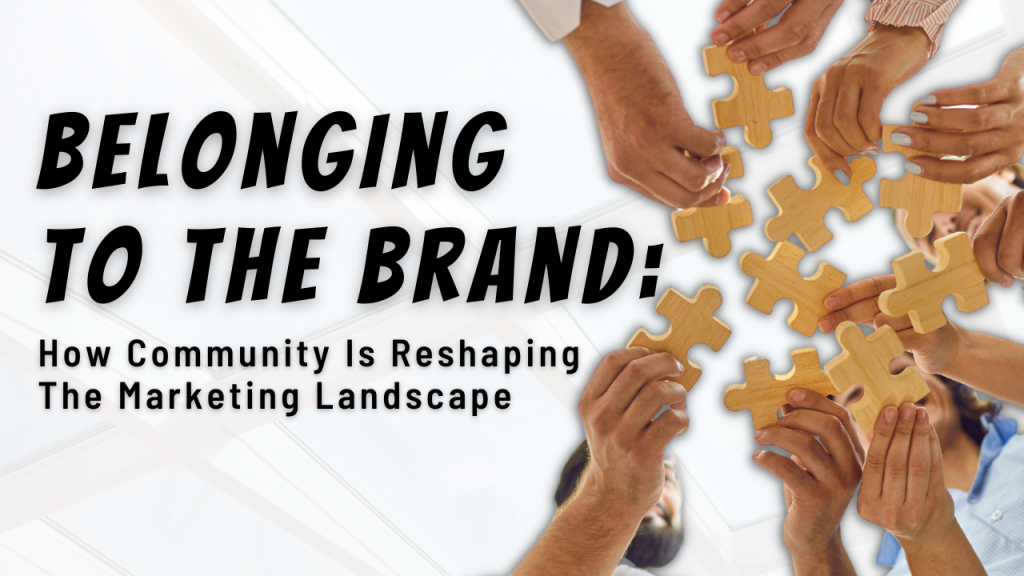
GUEST POST from Shep Hyken
According to bestselling author and marketing expert Mark Schaefer, the next—and last—great marketing strategy is community. When I read his latest book, Belonging to the Brand, I was intrigued by the subtitle, Why Community is the Last Great Marketing Strategy. Is it really the last? Having read Schaefer’s past books, I put faith in his words, but it’s up to you to decide.
First, let’s look at the definition of community, as it applies to marketing and business. The community includes customers aligned with the company, its brand promise and what it stands for. Schaefer writes in his introduction, “Helping a person belong to something represents the ultimate marketing achievement. If a customer opts into an engaging, supportive and relevant brand community, we no longer need to lure them into our orbit with ads and SEO, right? What we used to consider marketing is essentially over.”
Schaefer is saying that once the customer is part of the community, the need to engage with intrusive advertising and marketing messages is no longer needed. You will want to find meaningful ways to connect with customers other than traditional advertising and marketing programs, and these can include positive customer experiences, quality dependable products and services, the contribution the brand or company makes to making the world a better place and more.
In my book, The Amazement Revolution, one of the seven strategies covered was community. Harley Davidson was failing and rallied its community of customers to make suggestions that would get them to come back and buy its motorcycles. The company listened, the customers noticed and Harley regained its popularity and iconic status.
Lush, a cosmetics retailer with more than 950 stores worldwide, chose to make its products cruelty-free, which means no animals are harmed in manufacturing the products. They knew this would appeal to a segment of customers who are against animal testing practices. Those customers show intense loyalty toward Lush.
Apple created different communities of customers who voluntarily offer suggestions and answers to other customers in need of help and support. These communities are in addition to Apple’s regular customer support options.
These companies (and many others) have created communities of customers willing to evangelize their brands. They enjoy and love the companies so much that they provide some of the most powerful marketing techniques ever in the form of positive reviews and referrals, also known as word-of-mouth marketing.
Early in Schaefer’s book, he shares ten (10) reasons businesses can’t ignore the power of creating a community. I’ll share three of them with some of my commentary on each one:
- Brand Differentiation: Beyond price and product, which are often similar to the competition’s, the community can create an emotional connection. People like to belong to something. When they love a company and its products and find others who think and feel the way they do, they naturally gravitate toward the community. Once people join, they are participating at a higher level of brand engagement and their connection to the business is deepened by this connection.
- Market Relevance: How do you stay relevant? Listen to your customers. The community gives you the forum to listen and engage with your customers. The conversations you monitor or participate in will fuel you with ideas to make you even more relevant to your customers. Just remember, no matter how powerful the ideas and information you learn from listening are, they won’t mean anything unless you take action.
- Brand Loyalty: Loyalty is an emotional connection. Creating a community is a powerful way to drive loyalty. Schaefer shares some stats that make the case. Sixty-six percent of brand community members say they are loyal to the brand. Twenty-seven percent of customers say belonging to a brand influences their decision to do business with the brand. And, 66% of companies claim their community has impact on customer retention.
As powerful as creating a community is, don’t be lured into thinking you have a captive audience to which you can sell. That’s abusing the privilege and could be an insult to your customers. While members of your community may be more engaged and buy more, they don’t want to be sold. Use the community to offer early access to products and updates, ask for opinions and feedback, help in testing products and more. You want to give them a reason to meet and something to talk about.
So, is creating your company’s community your next big marketing strategy? If you haven’t already created one, it’s a concept worthy of serious consideration.
This article originally appeared on Forbes.com
Image Credit: Pixabay, Shep Hyken
![]() Sign up here to join 17,000+ leaders getting Human-Centered Change & Innovation Weekly delivered to their inbox every week.
Sign up here to join 17,000+ leaders getting Human-Centered Change & Innovation Weekly delivered to their inbox every week.